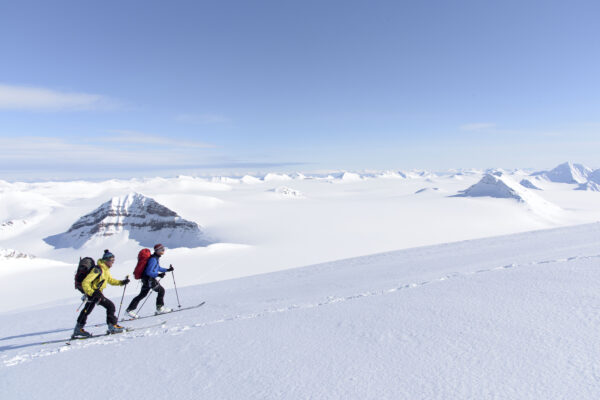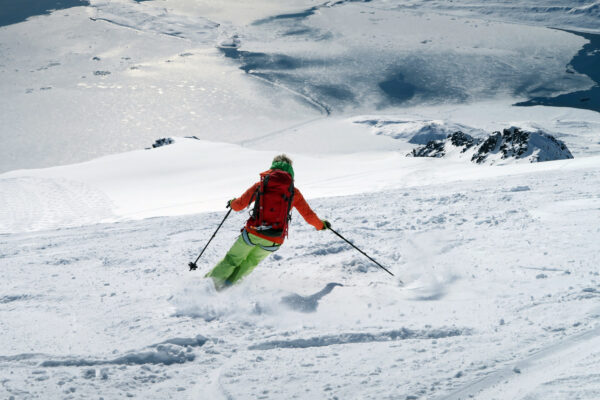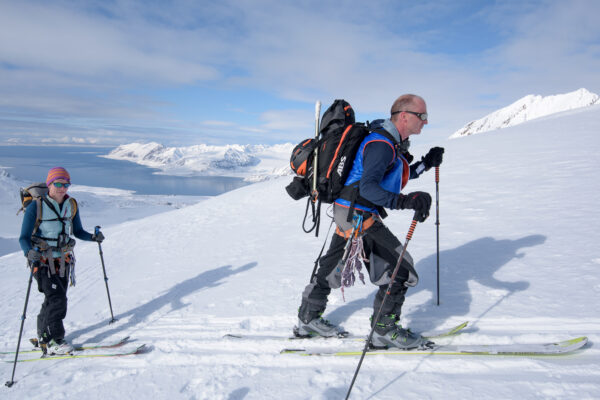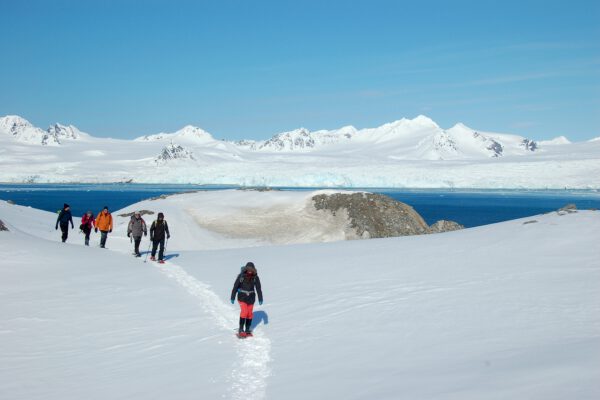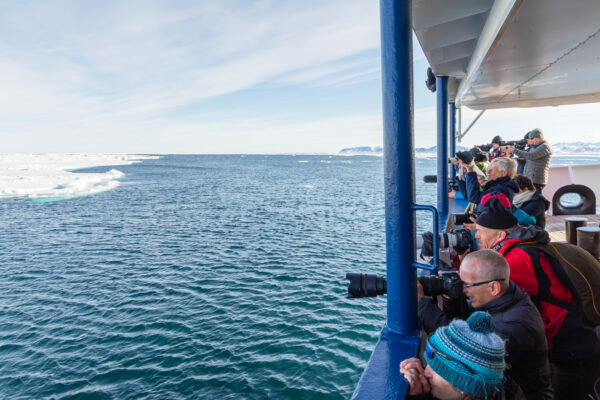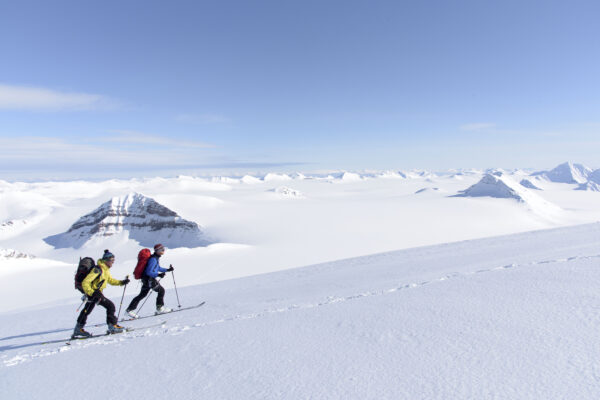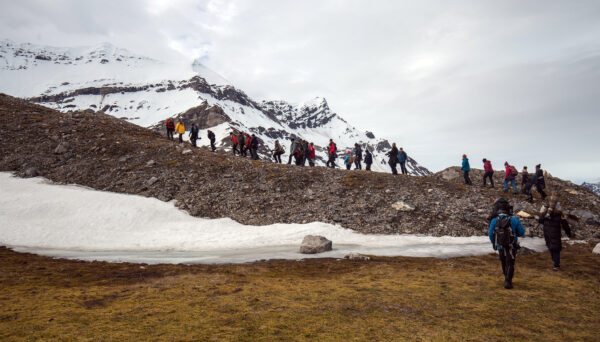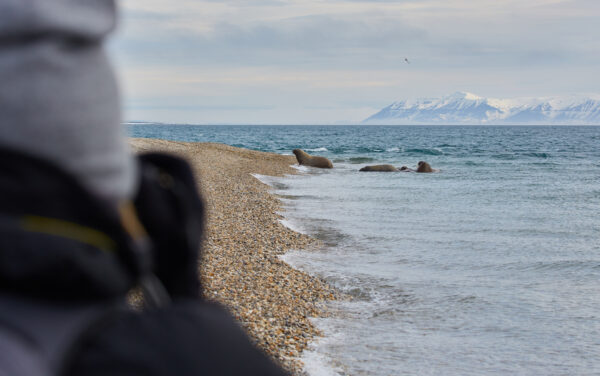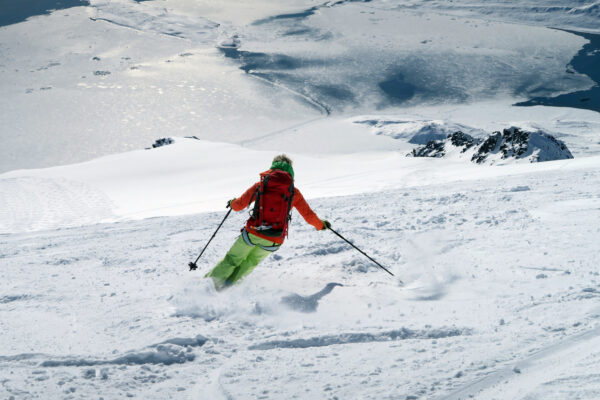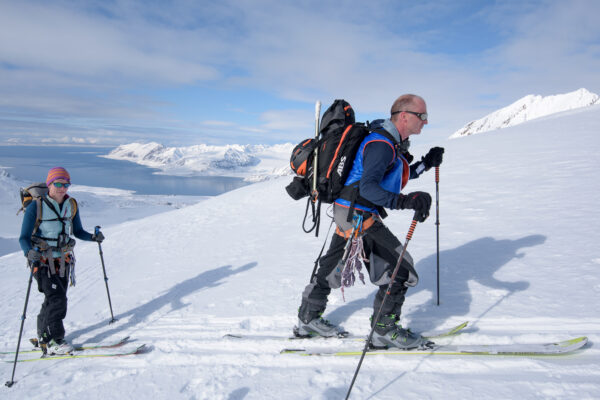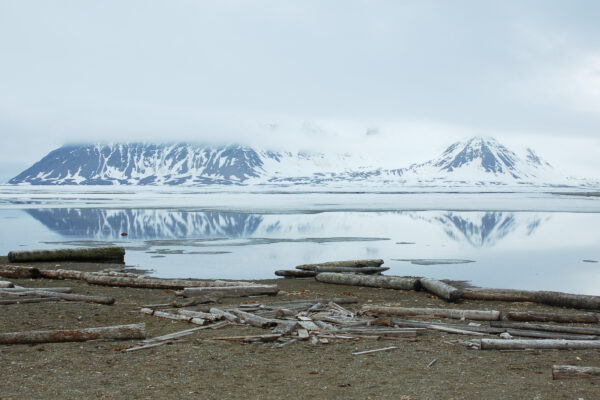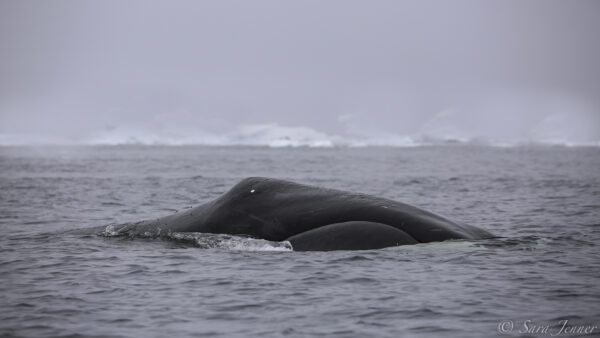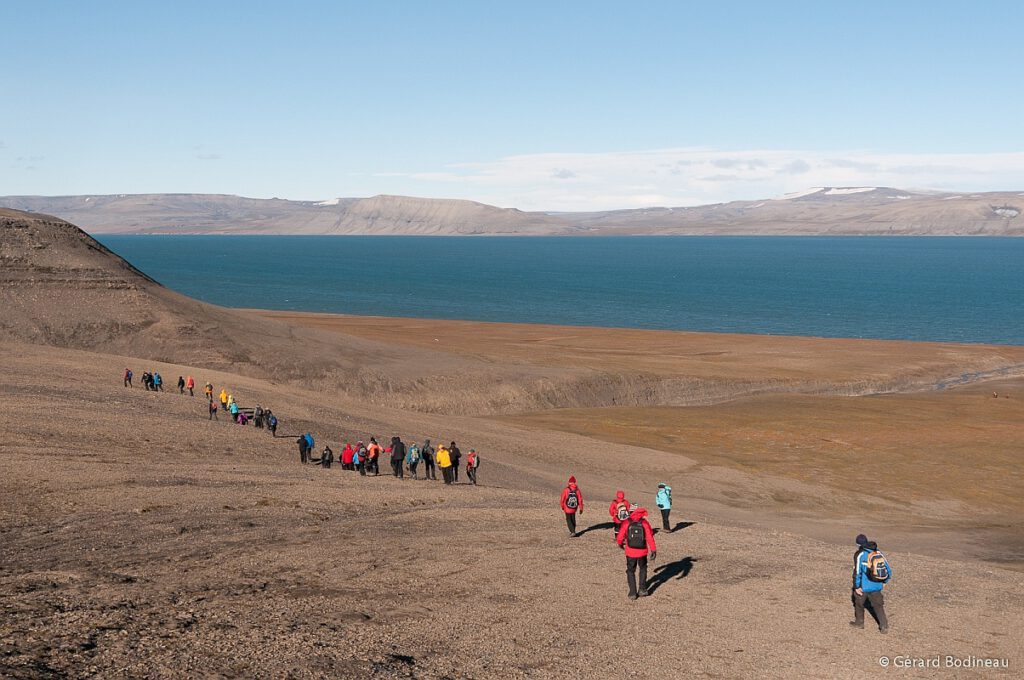The east shores of Spitsbergen are a fantastic place to view gorgeously rugged landscapes and exotic Arctic wildlife, including minke whales, Arctic foxes, and polar bears. And speaking of bears, this exploratory cruise also visits Bear Island – a bird lover’s dream, where large colonies of Brünnich’s guillemots, kittiwakes, and fulmars breed on shoreline cliffs over spans of dazzling drift ice.
Trip Itinerary
Cleaning the shores
Interested in doing something good for the enviroment?
We welcome you to participate in our ongoing effort to remove plastic waste and other rubbish from the shores of Spitsbergen.
Garbage from the ocean, such as fishing gear and plastic litter, piles up on these shores. This litter is hazardous to the animals, which get entangled in fish nets and sometimes ingest micro-plastics that can lead to starvation and suffocation.
Supported by AECO and the governor of Spitsbergen, we enjoy cleaning the beaches of Svalbard with our passengers. All participants will be assisted by our guides and provided with collection bags. About 50 passengers will clean in the morning while the other 50 have their excursion in another area. Then in the afternoon, the groups switch roles. And if we cannot clean a certain area because of roaming bears or other concerns, we will find an alternate area.
Long Hikes
Long hikes are for groups of 24 passengers maximum, accompanied by two armed expedition staff and a Zodiac that will sail ahead to watch for polar bears along the shoreline. Passengers who join this activity should have the willingness and ability to walk at least 15 km (9 miles) in semi-rough terrain that includes shorelines, tundra, low hills, and river crossings. Walks will take around six hours from start to finish, rest times included. We will walk at a modest pace and not cross any alpine terrain. Passengers who do not take part in long walks will have a landing in the morning at the start point of the walk, then sail to the end point of the walk for their second landing in the afternoon.
Day 1
You touch down in Longyearbyen, the administrative center of Spitsbergen, the largest island of the Svalbard archipelago. Enjoy strolling around this former mining town, whose parish church and Svalbard Museum make for fascinating attractions. Though the countryside appears stark, more than a hundred species of plant have been recorded in it. In the early evening, the ship sails out of Isfjorden, where we might spot the first minke whale of the voyage.
Day 2
We start the day by quietly cruising the side fjords of the spectacular Hornsund area in southern Spitsbergen, enjoying the scenery of towering mountain peaks. The mountain of Hornsundtind rises to 1,431 meters (4,695 feet), while the peak of Bautaen testifies to why early Dutch explorers gave this island the name Spitsbergen, meaning “pointed mountains.”
There are 14 magnificent glaciers in the area, and we have a fair chance of encountering seals and polar bears. The nearby cliffs of Sofiakammen are also home to thousands of pairs of nesting kittiwakes and little auks, and in the evening, we might see thousands of harp seals rutting on ice floes at Sørkapp.
Long hike – If conditions permit, we land at Treskelodden, then walk from Treskelen to Adriabukta. From there we walk west to Hyrneodden and north to the glacier in Wibewika (about 16 km / 10 miles), where we will be picked up. The other guests will have their program in Brepollen (morning) and Luciakammen or Sofiakammen (afternoon). We might also do this program in reverse.
Day 3
We arrive at the southeastern end of Bear Island, a great place for viewing large seabird colonies. The nearby nesting cliffs are part of an extensive nature reserve where large ships are not allowed to bring passengers on shore. Afterward we’ll sail northeast into Sorhamna, where we can get closer to the seabird cliffs. Chiefly Brünnichs guillemots, kittiwakes, and fulmars nest here.
Just north of this, in Kvalrossbukta, we will land and see the remains of a whaling station from early in the previous century. We might also make a landing in a shallow valley, such as Rendalen, and look for (at a safe distance) great skuas, large seabirds known to be fiercely territorial. As we continue north along the east side of Bear Island, we may still encounter dazzling shoals of drift ice.
Day 4
On the way to Hopen, we may encounter sea ice with rutting harp seals. We land at the southern end of Hopen Island, at Koefoetodden, where you can see the remains of 17th-century whaling sites. Through nearby Bekkeskaret is an easy route to Kvasstoppen (190 meters, 620 feet) and the remains of a plane from World War II. Hopen Radio station is the most remote manned weather station in all of Svalbard.
Day 5
Sailing along the western side of the Tusenöyane (where we’re not allowed to land in summer), you may see polar bears and walruses as we approach Risetreppen. This beautiful canyon features an accessible kittiwake colony. During our walk, we may encounter reindeer on the lush tundra.
Day 6
At Ardalstangen, we go on shore in an area with lakes and different species of waterfowl. Nearby in Habenichtbukta, we can look from some distance to a wintering site of 18th-century Pomor trappers, who often stayed for years in the same place. Later in the afternoon, we land at the south side of Russebukta, near a tundra with reindeer and great walking opportunities.
Long hike – If conditions permit, we land at Aardalstangen and see Habenichtbukta (and the remains of a Pomor site), then walk into Aardalen. From there we walk north along the mountain to Russebukta (about 17 km / 10.6 miles). This area is teeming with reindeer and wildfowl, and you will have a far-ranging view over the tundra. We might also do this program in reverse.
Day 7
Today we aim to land at the mountain of Stellingfjellet, near the largest colony of Brünnich’s guillemots in Spitsbergen. Later in the day, we will make landings at the rarely visited coast of south Spitsbergen, at the bay of Isbukta.
Day 8
We continue our voyage in Bell Sund, one of the largest fjord systems in Svalbard. The ocean currents make this area slightly warmer than other areas in the archipelago, which shows in the relatively lush vegetation. Here there are excellent opportunities to enjoy both history and wildlife.
One possibility is Ahlstrandhalvøya, at the mouth of Van Keulenfjorden, where piles of beluga skeletons can be found. These remains of 19th-century whale slaughter are a haunting reminder of the consequences of rampant exploitation. Fortunately, belugas were not hunted into extinction, and you might even see one here. Alternately, we may land at Millarodden at north side of Bell Sund. Here we can see a walrus haul-out site and possibly make an excursion on the tundra of Ingeborgfjellet, with its thousands of little auks.
Long hike – If conditions permit, we land at Recherchelagune and walk along the eastern shore of Recherchefjord, by Laegerneset (17th century whaling station). Our goal is to reach Ahlstrandhalvøya, and from there to Ingebrigtsenbukta. If need be, our Zodiacs can help us at the mouth of the river. We might also do this hike in reverse or land at Ingeborgfjellet, then walk along the coast to the west side of van Muydenbukta, along a shore with many whale skeletons.
Day 9
Our adventure comes to an end exactly where it started. Today you disembark in Longyearbyen, taking away memories that will accompany you wherever your next journey lies.
Please Note...
All itineraries are for guidance only. Programs may vary depending on ice, weather, and wildlife conditions. Landings are subject to site availabilities, permissions, and environmental concerns per AECO regulations. Official sailing plans and landing slots are scheduled with AECO prior to the start of the season, but the expedition leader determines the final plan. Flexibility is paramount for expedition cruises. The average cruising speed of our vessel is 10.5 knots.
Cabin Information
| Ship name | Cabin Name | Price | Sale Price | Departs on | Returns on |
|---|---|---|---|---|---|
| m/v Ortelius | Quadruple Porthole | $4,600 | NA | Jul 2nd, 2024 | Jul 10th, 2024 |
| m/v Ortelius | Triple Porthole | $5,500 | NA | Jul 2nd, 2024 | Jul 10th, 2024 |
| m/v Ortelius | Twin Porthole | $6,400 | NA | Jul 2nd, 2024 | Jul 10th, 2024 |
| m/v Ortelius | Twin Window | $6,900 | NA | Jul 2nd, 2024 | Jul 10th, 2024 |
| m/v Ortelius | Twin Deluxe | $7,300 | NA | Jul 2nd, 2024 | Jul 10th, 2024 |
| m/v Ortelius | Superior | $8,300 | NA | Jul 2nd, 2024 | Jul 10th, 2024 |
| m/v Ortelius | Quadruple Porthole | $4,600 | NA | Jul 2nd, 2024 | Jul 10th, 2024 |
| m/v Ortelius | Triple Porthole | $5,500 | NA | Jul 2nd, 2024 | Jul 10th, 2024 |
| m/v Ortelius | Twin Porthole | $6,400 | NA | Jul 2nd, 2024 | Jul 10th, 2024 |
| m/v Ortelius | Twin Window | $6,900 | NA | Jul 2nd, 2024 | Jul 10th, 2024 |
| m/v Ortelius | Twin Deluxe | $7,300 | NA | Jul 2nd, 2024 | Jul 10th, 2024 |
| m/v Ortelius | Superior | $8,300 | NA | Jul 2nd, 2024 | Jul 10th, 2024 |

